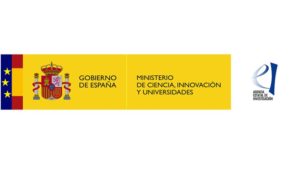Project
ADVANCED DESIGN OF NEW HIGH FREQUENCY COMPONENTS IN COMPACT WAVEGUIDE TECHNOLOGIES FOR FUTURE TELECOMMUNICATIONS SATELLITES (GUIDESAT)
Date | 2020 - 2023 |
Acknowledgements | The most relevant European satellite communication systems and applications are currently supporting a huge number of services of modern Digital Society. Among them, we highlight the global navigation system GALILEO, meteorological and Earth Observation programs like COPERNICUS, nanosatellites for scientific missions and big constellations of small satellites for implementing the upcoming “Internet of Satellites”, as well as large Telecommunication satellites in geostationary orbit. Thanks to these satellite payloads, many civil and military applications and a wide variety of sectors are being benefitted globally. With the aim of keeping the growing rate of such applications, all cited space programs are already deploying their future evolutions. Among them, one can find the Galileo second generation project, the next generations of meteorological (METEOSAT and METOP) satellites, the near future SENTINEL missions, the coming breed of small platforms for Starlink and OneWeb constellations, and the new large multi-beam space platforms operating in the millimetre wave (and sub-millimetre wave) frequency ranges (up to some terahertz). All these next-generation satellites will need more advanced communication payloads based on novel equipment with more stringent requirements. The main aim of this coordinated project is to address all identified challenges by designing novel passive components and antennas for next-generation satellite communication systems, including their prototyping and experimental validation. For that purpose, the four sub-projects will closely work on all available high-frequency technologies: i.e. more classical ones based on planar circuits and waveguides, more recent integrated planar waveguides with/without dielectric substrate, and the promising concept of gap waveguides. Advanced materials (such as bioplastics, artificial materials, liquid crystals, and also gallium nitride and graphene for terahertz frequencies), as well as manufacturing techniques (classical milling, 3-D fabrication methods, LTCC and micromachining processes), will be also investigated.
Participating entities: U.R.I. of Telecommunications and Multimedia Applications (ITEAM) of the Polytechnic University of Valencia (UPV), Department of Information and Communication Technologies of the Polytechnic University of Cartagena (UPCT), Department of Physics, Systems Engineering and Theory of Sign of the University of Alicante (UA) and the U.R.I. of Technologies, Construction and Telecommunications (ITCT) of the University of Castilla la Mancha (UCM). |
Partner | Proyecto PID2019-103982RB-C41 financiado por MCIN/AEI/10.13039/ 501100011033 |
Principal investigator | |
Research Areas | |
Research Group | |
Budget | € |

